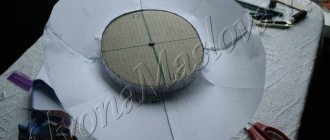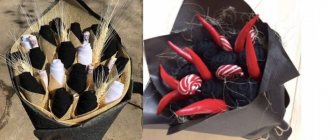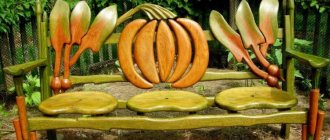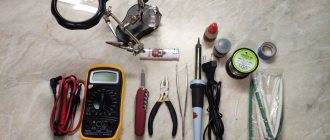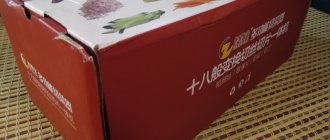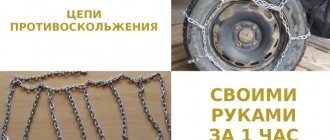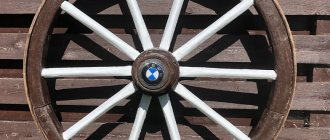Beton-House.com
Website about concrete: construction, characteristics, design. We combine the experience of professionals and private craftsmen in one place
Outdoor table with concrete top
Today, concrete tables have become incredibly popular decorative items among designers who are engaged not only in arranging garden plots, but also in the interiors of houses and apartments. This material, despite its apparent roughness, goes well with many modern styles.
It is worth remembering that additional surface treatment with abrasives and various decorative impregnating materials, plus the use of various pigment compositions gives it a very beautiful appearance, not much inferior to natural stone. Let's see what such furniture might look like, and how to make something similar at home with your own hands.
What you need to know about kitchen concrete countertops
We are used to the fact that concrete can be used to make a staircase or a foundation. But it turned out to be a universal material from which you can make garden furniture, a bar counter, and a tabletop.
If you follow the recommendations during the manufacture of the structure, you will get a reliable and durable product.
There are undoubted advantages to working with concrete material:
- Diluted concrete takes any shape. It is plastic, easy to correct and mold. Your possibilities are practically unlimited.
- Concrete can be painted, polished, sanded, and decorated with additional elements. Any processing changes its appearance. A concrete countertop can fit into the interior of any style, from classicism to loft.
- Concrete has heat-resistant properties. It tolerates temperature changes and mechanical pressure well.
- You will not find such a durable and reliable tabletop anywhere.
- Concrete is an environmentally friendly material that does not emit harmful fumes or other substances hazardous to humans.
- The cost of a concrete table is comparatively lower than that of wood or marble.
- You can combine concrete with other materials, such as glass or wood.
Concrete is a material that is practically not affected by external negative influences.
Among the disadvantages of a concrete countertop, several points should be noted:
- The surface should be protected from water and dirt. The porous concrete structure quickly absorbs moisture and dirt. It won't be easy to wash off.
- You cannot cut food or cut fabric on such a table. Scratches easily remain here and the attractive appearance is lost.
- If the structure is installed incorrectly, cracks or chips may appear.
- Not every cleaner is suitable for concrete. The composition of the washing liquid should not contain abrasive particles or aggressive components. Choose a product that is neutral in composition.
- Hot objects can leave marks on the surface that are difficult to remove. Use special racks for hot dishes.
Financial costs are small. Externally, the product is similar to a marble countertop.
Desert that warms you up on cold days
There are manufacturers who have invested heavily in technology to come up with lightweight concrete for furniture. Such is the case with the LCDA team, which calls itself an innovative and creative creator company.
They boast that they were able to create such a base - “Béton Lège” or fans of concrete with various characteristics. And the most important quality of this achievement is a very interesting and modern look.
What tools and materials will you need to make it yourself?
A concrete table is made with your own hands using standard construction technology. Here it is important to be accurate in calculations, careful when mixing the composition and patience to watch several training videos on this topic. To prepare for work, you need to purchase:
- concrete class not lower than M400;
- river sand, but any other will do;
- gravel, crushed stone or marble chips;
- color, if you are planning to paint it like granite or other “noble” material;
- reinforcing mesh with cells 25*25 mm made of metal or fiberglass;
- Chipboard or laminated plywood;
- timber 30*50 mm
- self-tapping screws;
- metal corners;
- construction polyethylene in roll;
- concrete mixer or construction mixer;
- bucket;
- pencil, note paper;
- yardstick;
- building level;
- mallet;
- shovel;
- ladle for solution;
- putty knife;
- angle grinders and wheels;
- silicone sealant;
- liquid Nails;
- screwdriver;
- jigsaw
This is the minimum set of tools you will need to create a concrete countertop. Once you have purchased everything you need, it's time to start creating the project on paper.
Making your own wood for the street
When making wood with LEDs for outdoor use, you must take into account the aggressive influence of the environment. Therefore, before you start making an LED tree for the street with your own hands, you need to determine the entire procedure in advance.
The general scheme of work will be approximately the same as for conventional structures intended for indoors. In the outdoor version, it is recommended to pay attention to a more thorough coating of the trunk and branches with high-quality materials.
It is also necessary to take care of good insulation of the LEDs after soldering them with resistors.
The heat shrink tubing should completely cover each pair. If necessary, all unreliable areas can be additionally insulated with black electrical tape. The same goes for wire connections in the plus and minus areas. Decorative items should be secured more efficiently so that they are not torn off by strong gusts of wind.
Creating drawings and diagrams
To avoid possible mistakes in the early stages, take the most accurate measurements possible. Measure all parameters, including the location of the sink, outlets and other nuances available in the countertop area.
Creating a drawing will be required; this step will help to accurately manufacture the structure.
If you plan to make a hole for the sink, check the numbers several times. This is a case where every millimeter is critical. If the tabletop is of impressive size, it makes sense to first divide it into fragments and cast it in parts. It is more convenient to make the joining points at right angles. It is not recommended to make the tabletop thicker than 5 cm.
It is important to carefully measure the space where you plan to install the product with the countertop.
Sections for storing things of the most practical owners
Jeremy Kaplan is the designer who came up with another great and interesting version. There's space to put your stuff at the top, and there's space to stash a stack of magazines at the bottom. Chic and at the same time functional.
Preparing the formwork
To give the future tabletop a certain shape, formwork is made. To do this, take a plywood sheet and lay it on a flat, flat surface. Make sure that the plywood does not bend or warp anywhere. Install and secure a 50 mm high beam around the perimeter. This is the optimal value so that the finished tabletop is strong enough and does not collapse under its own weight. All joints are fastened on the outside of the beams with corners or self-tapping screws. Do not try to fit them tightly together at this stage. All cracks and unnecessary holes are then filled with sealant.
You need to install a sheet of plywood on a horizontal surface, which must be level. Place the boards on edge along the edges.
Then place plastic film in the formwork so that there are no creases or folds. Any unevenness will be reflected in the future concrete surface. You can lubricate the inside of the polyethylene with technical oil to make the concrete structure easier to remove.
Flowerpot
Working with cement is difficult, but this craft is just for those who have never encountered such a material as concrete. To make a flowerpot you will need the following consistency: cement + sand + water, two buckets and unnecessary towels.
Take a towel and dip it into the solution so that it thoroughly absorbs the mixture. The entire fabric must be covered with concrete mass.
Attention! Use rubber gloves to keep your hands safe.
Prepare a second bucket in advance, select the length of the towel and turn it over. Throw the towel over it.
An example of how to cover a bucket with a cloth
If suddenly the rag is larger than the bucket, then it can be cut, but this must be done at the initial stage, while the concrete is wet. Remember: how you arrange the fabric on the bucket has a huge impact on the final result. So use your imagination and arrange the fabric the way you like.
Let the future product dry, this will take a little more than a day.
Then take out a bucket, fill the concrete pot with soil and plant a flower. Ideas for such cement pots can be seen in the photo below.
Flowerpots can be made of any size and not only from fabric. To do this, prepare any two suitable containers, one larger and the other smaller. Insert one into the other, and fill the space remaining between them with cement mortar. After drying, you will get a suitable, attractive product for planting flowers.
If you wish, paint the craft or varnish it - this will make the pots look more beautiful. We invite you to look at photos of original ideas for such products.
Making a hole for the sink
If a sink crashes into the table, you need to prepare a hole for it in advance. Accuracy of measurements and accuracy in preparing the formwork are important here. Test yourself several times to be sure of the finished result.
If this is an overhead option, then you should take the sink and lay it upside down on a sheet and trace it along the side.
Manufacturing features for overhead models
If you plan to install an overhead model, make a preliminary drawing of it on paper. Trace it around the perimeter and transfer the outline to the plywood. Then measure the height and width of the sides so that the sink will fit into the finished hole after the concrete has dried.
How to do it for embedded
If the sink is built-in, make a preliminary drawing along its edge. Lay 50*50 mm beams along these lines. They are fastened together and fixed to the plywood using self-tapping screws. The beams inside the structure can be taken much higher than the outer edge. This is done to prevent concrete from accidentally flowing onto the sink hole.
For a built-in model, an outline should be drawn along the edge. Along the resulting lines, bars are installed, subsequently secured with self-tapping screws.
Three steps to the sculpture
Concept
We will immediately decide where our future creation will be located. To decorate the park, it is better to have something relaxing: figures of people, animals, or abstract decorations. Characters from fairy tales or cartoons are suitable for the playground.
If a concrete sculpture can be used in a game, great!
Sketch
Drawing of the future sculpture. If you can do it accurately and in detail, good. If it’s also on a scale, it’s absolutely wonderful. If not, at least in the most general form, primitively, as long as it is clear to yourself. Or pick up a ready-made one on the Internet. The main thing is to decide on the dimensions (Fig. 1), at least the basic ones, this is mandatory.
Determining the size of the future sculpture
Scale model
The sketch has been made, but it’s too early to start work. The next step is a model of the future sculpture.
We make the model from clay or plasticine. In fine details, say the tail and paws of a cat from Fig. 1 insert a wire for rigidity.
If you don’t have sculpting skills and the desire to master them, we look for a suitable model in a toy store, at a flea market, or create it on a 3D printer.
Advice.
Sometimes an element looks great on a tiny model, but does not look enlarged. To avoid this, try to select the size of the model on a scale of about 1:5. Let's say, for a meter-long sculpture, a 20 cm model is just right.
What is the model for? Let's explain with an example.
To copy a finished drawing, there is one way: the original is drawn with a grid of identical cells, and then small simple “pieces” are transferred to the same or proportionally enlarged (reduced) grid (see photo).
Transferring a drawing across cells
A sculpture can be copied in a similar way. The only thing is that we will transfer not a plane, but a volume, so the original needs a volumetric one.
I recommend: How to make a topiary, green sculpture for a garden or cottage
Reinforcing frame and installation of supporting structure
The reinforcing mesh or cut wire is laid so that there is a distance of at least 25 mm from the edge of the formwork. It is unacceptable for pieces of the reinforcing frame to stick out from the finished product. Make sure that the height of the frame does not exceed the beams and does not rest against the bottom of the plywood. Otherwise, fragments of wire may remain on the surface of the finished product.
It has the form of a mesh, the cells of which have a size of 25x25 mm. You need to retreat 25 mm from the sheet and from the edges.
Processing joints
When you have the formwork ready, it’s time to process the joints, remove all the irregularities and gaps. It is convenient to do this with silicone sealant. It hardens quickly and penetrates into small cracks and cracks. The dried sealant can be further polished to give it the desired shape and smoothness.
DIY concrete furniture with rounded edges looks especially good in the interior. It is convenient and less traumatic in everyday life. The rounding of the edge is done at the stages of formwork and joint processing.
Carefully process everything so that the cracks and gaps are filled.
There are two ways to do this:
- A curved metal sheet is attached to the area where the boards join. Silicone is poured between the corner of the beams and the rounding of the metal tab.
- If there is no suitable template, you can take a piece of pipe or glass of the required diameter. Place it in the corner of the formwork, fill the resulting space with sealant and wait until it dries. Then remove the object and sand the silicone to the desired shape.
Concrete furniture - brutal homemade products
Despite the fact that today you can buy or order any furniture, many people prefer to make their own furnishings. Most often, furniture is made from wood (solid wood, panels, waste), which has been repeatedly discussed on the portal, but today we will talk about another universal material - concrete. In this article, the craftsmen of our portal pour concrete countertops for the office and kitchen, make a concrete sink, and implement other interesting projects.
Concreting process
To prepare the concrete mixture you need to take:
- cement, 2 parts;
- sifted sand, 3 parts;
- plasticizer;
- water.
If you add color pigment to the composition, do it at the dry mix stage to ensure a uniform color. Dissolving the paint in water, add the composition to the concrete mixture. This is how you get beautiful “marble” stains.
There are several methods for pouring concrete mixture. In the first case, the formwork is completely covered. With the second method, concreting occurs in layers.
There is another recipe for creating a tabletop with your own hands:
- cement, 1 part;
- sifted sand, 2 parts;
- marble chips, 4 parts;
- water, 0.5 parts.
The formwork can be filled with concrete at one time or poured in layers. In the first case, the countertop has a single concrete structure. In the case of layer-by-layer pouring, expanded clay is added instead of crushed stone. It makes the entire structure lighter and more convenient for further installation.
Pouring and uniform distribution of concrete over the entire area of the formwork.
Decorative design
Before pouring the face layer, you can beautifully arrange decorative elements at the bottom of the formwork. Here, various beads, pieces of glass, horseshoes and even memorable souvenirs can be used as decorative elements. Try laying out a wire ornament as decoration. After pouring the concrete, wire fragments, glass or metal texture will appear on the surface of the countertop.
If no decor was used, then the front side is sanded.
When you place the decor on the surface of the plywood sheet, make sure that it does not move. To do this, glue each piece to the chosen place. This will ensure that you end up with the pattern you planned.
How to make swan figures
Beautiful white swans will become a real decoration of the site. An unnecessary plastic basin installed upside down is suitable as a frame base. The neck is made of intertwined metal wires, bent in the shape of the letter S. The wire is attached to the basin by drilling a hole in it.
The basin is coated with cement; rags and pieces of foam plastic are used to form the necessary bends. Form wings and tail. The wire for the neck is wrapped with rags soaked in cement, and cement is gradually applied on top, in thin layers, forming a neck of the required thickness and a head.
Decorative adjustments are made on the wings and tail, imitating plumage using scraping. The eyes and beak are outlined on the head. Leave the swan to dry for at least a week. After this, the product is sanded, primed, and painted.
Facing solution
For the face layer solution, mix cement with water. Then crushed stone, sand or marble chips are added, depending on the recipe. Stir thoroughly to avoid lumps. The peculiarity of the composition is that they use finer grinding of sand or gravel, without large fragments or sharp edges. Add a little less water than indicated in the recipe. This will help you avoid small holes on the surface of the finished product. For the front layer, the solution is poured to a level of no more than half of the formwork.
When laying the cement mortar, compact and shape it using a spatula. Do not allow air voids to form.
Fill the base layer
The main layer is poured approximately 30 minutes after the front layer. This time is enough for the concrete to set and harden a little. Here the solution is created according to the classic recipe with consistent proportions of all components. After pouring, wait until the new layer sets. Then cover the countertop with film for a day. After the time has expired, the polyethylene can be removed and the concrete can be covered with a damp cloth.
A tabletop made from concrete mortar can look very original.
Final stage and decoration
Dismantling formwork requires care. Disassemble the entire structure, remove the sides. Turn the formwork over and tap the entire surface with a rubber hammer. This will allow the hardened concrete mixture to easily separate from the plywood sheet.
This table cover is suitable not only for the kitchen, but also for the dining room, living room or terrace.
After the concrete has completely dried and you have dismantled the formwork, you need to sand the surface. This will smooth out all the unevenness, remove glue and air pores, and prepare the tabletop for further painting or varnishing. The grinding process also reveals the decor embedded in the concrete texture. All small stones, glass and beads will not “sparkle” if they are not polished first. You can also cover the countertop with decorative tiles or make it look like natural stone.
After sanding, allow the tabletop to dry thoroughly.
Then the surface is leveled and smoothed using an acrylic-cement composition. Mix the mixture to a semi-thick mass and apply to the surface of hardened and polished concrete. This will fill all the cracks and microcracks. The mixture must be applied at least three times, allowing each layer to dry thoroughly. Between stages, sand the surface to avoid the formation of “waves” and unevenness. The last, third layer is not sanded, but left overnight until completely dry. Finally, the tabletop is processed with a grinding machine. Critically evaluate the finished work. Are there any cracks or pores left?
You can also process a concrete countertop manually using sandpaper. But this will require a lot of effort and time.
The polishing step adds attractiveness and smoothness to the countertop. Please note here that the polishing pad must be wet. Then apply primer varnish in one or more layers. Remember that each application of varnish must dry thoroughly. All that remains is to polish the tabletop with wax and, after hardening, clean it with a soft towel. Your tabletop is almost ready.
If you follow the consistency and rules of working with interior concrete, making a tabletop from it will not be at all difficult.
Final finishing of the sculpture
We begin finishing the surface of the mixture the very next day after installation. Concrete has not yet gained strength and can be cut even with a knife. This is the last opportunity to correct the mistakes made without much difficulty.
We smooth the concrete in this state to the state of a planed board, correct and complement the texture, make → ironing.
Let the decorative concrete sit for at least a week before grinding it. If you start earlier, particles of crushed stone and sand will turn out, forming shells and furrows.
We grind large parts and flat surfaces with a grinder with an attachment in the form of an abrasive cup. Fine relief - with petal nozzles made of sandpaper, nozzles with a soft base and manually - with regular sandpaper.
We polish using the “wet” method, wetting both the abrasives and the concrete itself with water.
Very tiny details or ornamentation are rarely required for concrete sculptures. If, however, your plan requires hair-breadth precision, we do the processing using the set concrete. We work with small “grinder” cutting discs, a hammer drill, a hammer and thin chisels of various shapes.
Examples of ready-made concrete countertops with your own hands
Once the tabletop is ready, completely dry and processed, it is time to assemble the furniture. To do this, assemble a frame from wooden or metal structures. Run electrical wires if this is a kitchen table and appliances will be installed on it. Install the sink and other necessary elements.
It not only has an attractive appearance, but is also easy to use, as it is resistant to most negative factors to which the kitchen is exposed.
Concrete table in red and monolithic consoles
There was an old, shabby table in one of the corners of the apartment, and I just needed to rehearse with concrete, and I decided to create a concrete tabletop. I assembled the formwork and reinforcement into the walls, tied it together and poured it. The concrete countertop is ready.
For concreting, the craftsman used a standard DSP, a rough leveling mixture for the floor and a finishing self-leveling floor. The reinforcement is fiberglass, 4 mm thick, “recessed” into the wall by 8 cm (as far as the drill is enough), the frame is connected with a pitch of 15 cm.
First, I poured the necessary base from CPS (sand concrete without filler), so that I did not have to level it under the finishing layer, and poured a leveling mixture on top of the sand concrete. After stripping the surface of the cement countertop, I sanded it well, primed it, and glued polyurethane molding along the edge a few mm above the surface.

